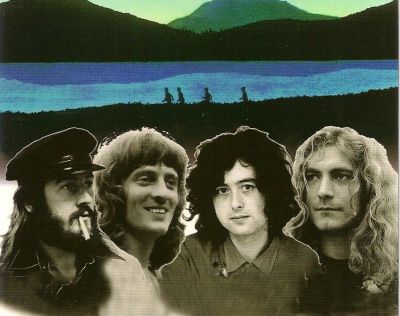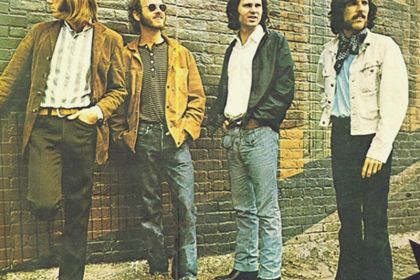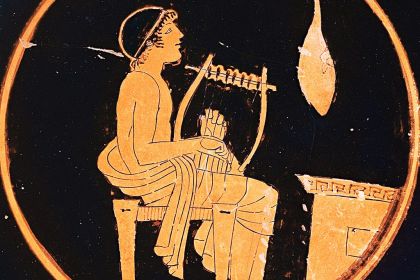Music Theory
Aeolian mode in Led Zeppelin songs

Led Zeppelin LP cover
The Aeolian diatonic mode is one of the most common songwriting techniques, allowing composers to harmonize a melodic line with chord accompaniment. The tonal theory establishes seven diatonic modes, the skillful use of which raises the song's chances of being both memorable and emotionally impactrful.
Together with Dorian and Lydian, Aeolian belongs to the minor diatonic modes due to its tonic triad (rooted in the first scale degree) being a minor chord. Of these three minor modes, the Aeolian is used more extensively as its structure allows the musical functions of the tonic, subdominant, and dominant to interact most naturally. For a more detailed introduction to the Aeolian mode and the natural minor scale on which it is based, read our article on the 8 songs to introduce Aeolian mode and natural minor scale.
Led Zeppelin's musical output shows the band's preference of the Aeolian mode (5 tracks) over the other two minor diatonic modes—Dorian (4 tracks) and Phrygian (1 track). However, the overall output of other leading rock bands shows a more pronounced presence of the Aeolian mode:
- The Beatles—8 Aeolian, 4 Dorian, 1 Phrygian;
- Pink Floyd—26 Aeolian, 6 Dorian, 4 Phrygian;
- The Doors—9 Aeolian, 5 Dorian, 0 Phrygian.
Led Zeppelin's Since I've Been Loving You utilizes the Aeolian mode in a way that is rather typical of popular music. In the harmonic analysis of the verse chord chains, the scale degrees (denoted with Roman numerals) show the following progression in the key of C minor: Cm–Fm7–Cm–Fm7–Cm–G7–Cm or i–iv7–i–iv7–i–V7–i.
In the chord chain, we see examples of plagal (iv7–i) and authentic (V7–i) cadences—the crucial musical turnarounds used in classical works to complete musical phrases which, much like punctuation. Note how the authentic cadence uses the G7 major dominant chord rooted in the fifth scale degree. The chord is marked in red, as it does not belong to the Aeolian mode, where the dominant chord should be a minor one. The introduction of the V7 major dominant chord into the Aeolian mode implies an alteration of the seventh scale degree in which the subtonic turns into the leading tone, imparting a much greater sense of completeness to the authentic cadence. In theory, the Aeolian diatonic scale with raised seventh scale degree is called the harmonic minor scale.
Both major and minor dominant chords are used in the chord progression accompanying the choruses: Gm–A♭–Fm7–Cm–G7–Cm or v–VI–iv7–i–V7–i. At the beginning of the progression, we can also hear v–VI, a rather noteworthy musical turnaround called the deceptive or interrupted cadence.
Listen to Since I've Been Loving You by Led Zeppelin:
Both verses of Tea for One show a well-developed musical form composed in the С Aeolian and based on a progression that follows a typical blues formula: Cm–Fm–Cm–Gm–Fm or i–iv–i–v–iv.
A few middle lines of the verse use a typical two-chord rock riff: B♭–Cm or VII–i. The riff is further varied, involving other scale degrees: E♭–Fm or III–iv. This song section helps understand the concept of the harmonic sequence—a musical turnaround repeated in a modified form involving different scale degrees. Here the segment of the sequence is formed by two chords VII–i whose roots are spaced from each other by a major second. This segment is repeated starting from the third (v–iv) scale degree.
The final lines of both stanzas use the Aeolian progression: Cm–Gm–Fm–B♭–Cm or i–v–iv–VII–i.
Listen to Tea for One by Led Zeppelin:
Composed almost entirely in F♯ Aeolian, Immigrant Song opens with the iconic battle cry section ("Ah-ah-ahh-ah") using the F♯m tonic chord rooted in the first degree of the natural minor scale. This refrain-like section precedes each of the two verses, which are accompanied by the following chord progressions:
- A–E–F♯m or III–VII–i;
- A–E–A–F♯m III–VII–III–i.
Both progressions show that the minor tonic chord appears in combination with the A major mediant and the E major subtonic chords.
Listen to Immigrant Song by Led Zeppelin:
Similar Aeolian progressions are seen in the iconic Stairway To Heaven. Here, the A Aeolian chord chains flow from stanza three through six:
- C–G–Am or III–VII–i;
- C–G–F–Am or III–VII–VI–i.
Each line of the song's final section that opens with the lyrics "and as we wind on down the road" is supported by the chord riff: Am–G–F–G or i–VII–VI–VII.
Finally, the closing lyric "and she's buying a stairway to heaven" reveals the following Aeolian progression: Am–Fmaj7–G–Am or i–VImaj7–VII–i.
Listen to Led Zeppelin's Stairway To Heaven:
Another example of the use of the Aeolian mode is found in Led Zeppelin's arrangement of Jake Holmes' Dazed and Confused. The song is performed entirely with this looping progression: Em–G7–Em–Em7–C7–Em or i–III7–i–i7–VI7–i.
Dazed And Confused Led Zeppelin
Explore how Led Zeppelin uses other musical modes in our articles:
- Lydian mode in Led Zeppelin songs
- Dorian mode in Led Zeppelin songs
- No Quarter: two minor modal modes of Led Zeppelin's psychedelic track
Discover more songs composed in Aeolian minor mode and their harmonic analyses in the following articles:
- 8 songs to introduce Aeolian mode and natural minor scale
- 6 songs combining harmonic minor and Aeolian mode
- Butterflies and Hurricanes: piano intermezzo meets the chaos theory
- Golden Slumbers: lyrical origins of the famous Beatles lullaby
- Hypnotized: Fleetwood Mac's song about aliens
- Locomotive Breath: fine groove born from Jethro Tull's studio session
- Shaman's Blues: quintessential The Doors song refined their most controversial album
- I Shot the Sheriff: Burnin' spliff nearly destroyed Bob Marley's original recording
- Hero and Heroine: Strawbs lyrics that allegorize drug addiction through Greek mythology
- Bungle in the Jungle: early prog-rock hit vs the greatest boxing match



